Haworthias are easy-growing succulents. They are famous due to their types and patterned leaves. If you love growing plants in water, you might have thought for once about growing Haworthias in water.
In general, Haworthias can be grown in water if correct care is provided. To grow your haworthia in water, wait for the plant to mature and produce babies. Then, divide them and put them in a jar filled with water. You can also take a plant leaf-cutting and grow them in water.
You must take care of the water quality. It should be pure water and changed frequently. Keep them under indirect sunlight, fertilize lightly, and avoid temperature stress and high humidity.
It is always fun to grow succulents in water. It is also easy for beginners because they are not much aware of the soil quality. If you wish to grow Haworthias in water, this guide will help you do it correctly.
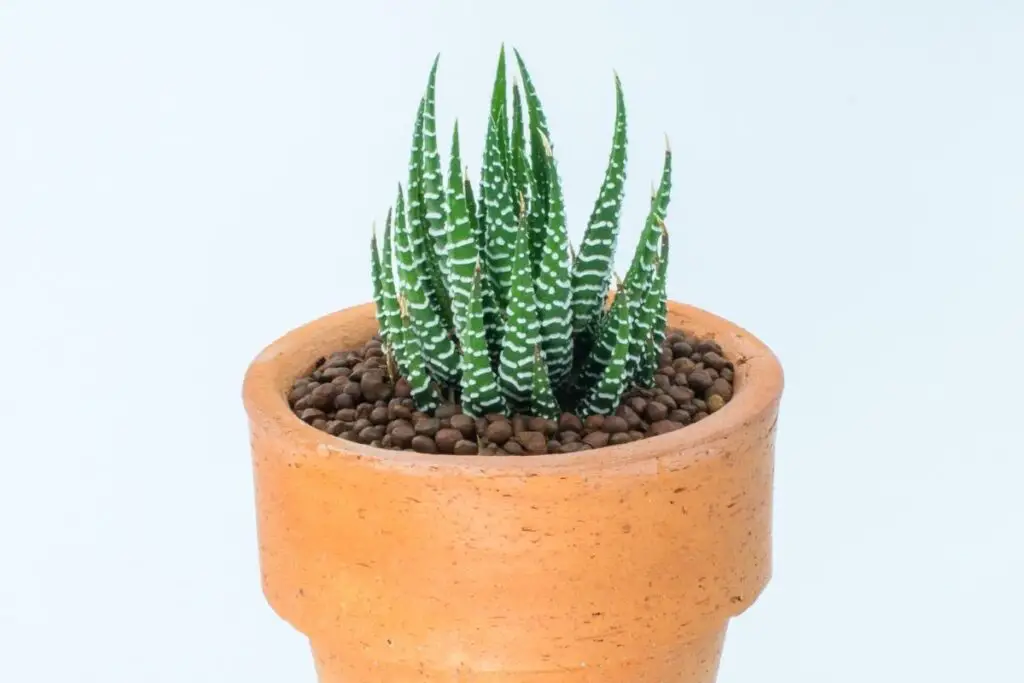
Can Haworthias grow in the water?
Haworthias can easily grow in water without any trouble, as I mentioned earlier.
Haworthias will stay healthy in the water as they stay in the soil.
They will grow better in water because there are many advantages which we will discuss later.
They will keep growing as long as you want to keep them.
If you want to keep Haworthia in water for long, you must care for their requirements.
However, you might not find good results all the time.
So, don’t get disheartened. But with the right processes and care tips, there is quite a high chance of success for Haworthias in water.
You can try this method if you are a beginner and unaware of the right soil.
While growing Haworthias in soil; proper watering, drainage, container size, and drainage holes matters a lot.
In water, you don’t need such things.
While in water growth, all you need is a good jar and good water. That is why growing them in water is perfect for a newbie gardener.
Things to remember
Some things need consideration for a successful Haworthia growth in the water.
There are not many things to remember, only a few things discussed below:
The plant
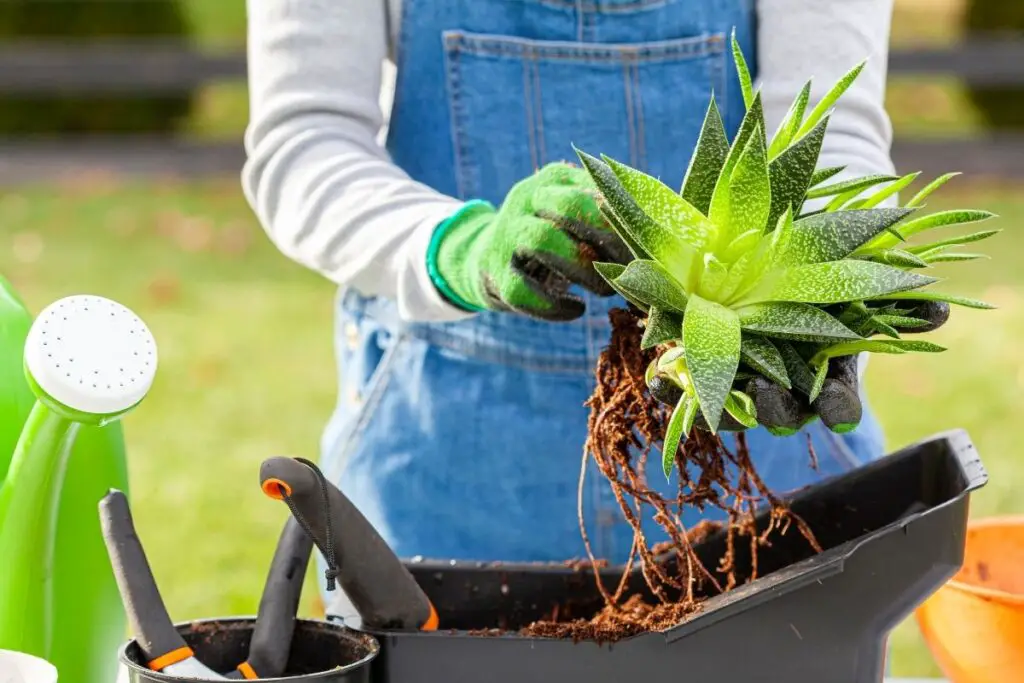
If you have bought a new plant with roots, you can easily put it in the water.
For growing Haworthia from offsets, wait until the plant grows some roots.
Otherwise, the plant will not root well.
Since the offsets are quite young, root growth is needed.
If you want to keep a mature plant in the water for water therapy, take it out from the soil, remove the soil, cut off the damaged roots, and put it in the water.
Don’t worry about the roots because they will grow back.
Separation timing
For dividing offsets, you must wait till the end of their dormancy or the beginning of their growing seasons.
When the dormancy ends and the growing period begins, the plant will grow vigorously without issues.
Looking for gardening supplies? We have tested 100's of products before recommending them to you guys. Check out our best pick below:
| Image | Gardening Supplies | Best Price? |
|---|---|---|
 Top
Top Top
Top | Raised Garden Bed Kit | Check On Amazon |
 | XLUX Soil Moisture Meter, Plant Water Monitor, Soil Hygrometer Sensor for Gardening, Farming, Indoor and Outdoor Plants, No Batteries Required | No Results |
 Top
Top Top
Top | 82 Pcs Garden Tools Set and Extra Succulent Tools Set | Check On Amazon |
 | Joeys Garden Expandable Garden Hose with 8 Function Hose Nozzle, Lightweight Anti-Kink Flexible Garden Hoses, Extra Strength Fabric with Double Latex Core, (50 FT, Black) | No Results |
 Top
Top Top
Top | Dual Chamber Compost Tumbler | Check On Amazon |
 Top
Top Top
Top | Sunnyglade Plant Stakes | Check On Amazon |
 Top
Top Top
Top | Organic Cold Pressed Neem Seed Oil | Check On Amazon |
 Top
Top Top
Top | Mighty Mint Gallon :-Insect and Pest Control Peppermint Oil | Check On Amazon |
 Top
Top Top
Top | Scotts DiseaseEx Lawn Fungicide | Check On Amazon |
 Top
Top Top
Top | Jacks Classic 20-20-20 All Purpose Fertilizer | Check On Amazon |
 Top
Top Top
Top | 30,000 Seeds Pollinator Attracting Wildflower Mixture | Check On Amazon |
 Top
Top Top
Top | Survival Vegetable Seeds Garden Kit-Over 16,000 Seeds | Check On Amazon |
Choose a healthy plant.
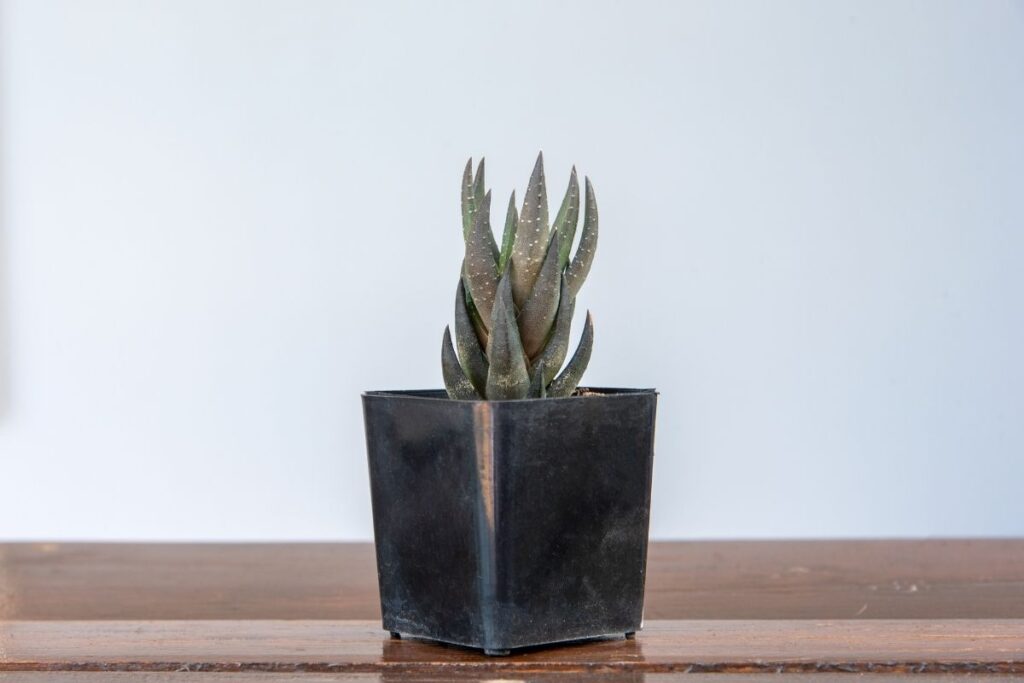
Always choose a mature and healthy plant.
For leaf cuttings, choose a young leaf.
Don’t go for the old base leaves as they won’t root well.
Use clean, transparent jars.
Though you can use any jar or vase of your choice, transparent jars help you track the root growth and check the water quality daily.
Whenever you see the water has turned dirty, you must change it.
Wash the jar well before using them.
Otherwise, the bacteria in the dirty jar can cause fungal infections.
Use a broad-mouthed jar.
When you use a broad-mouthed jar, it will be easy to take the plant out.
While using a narrow-mouthed one, you can hurt the roots every time you take the plant out while changing the water.
Use distilled or rainwater.
As you grow them in water, the quality is quite a matter of concern.
Distilled water or rainwater is pure and free of hard minerals.
You can also buy spring water from the market.
Avoid using tap water.
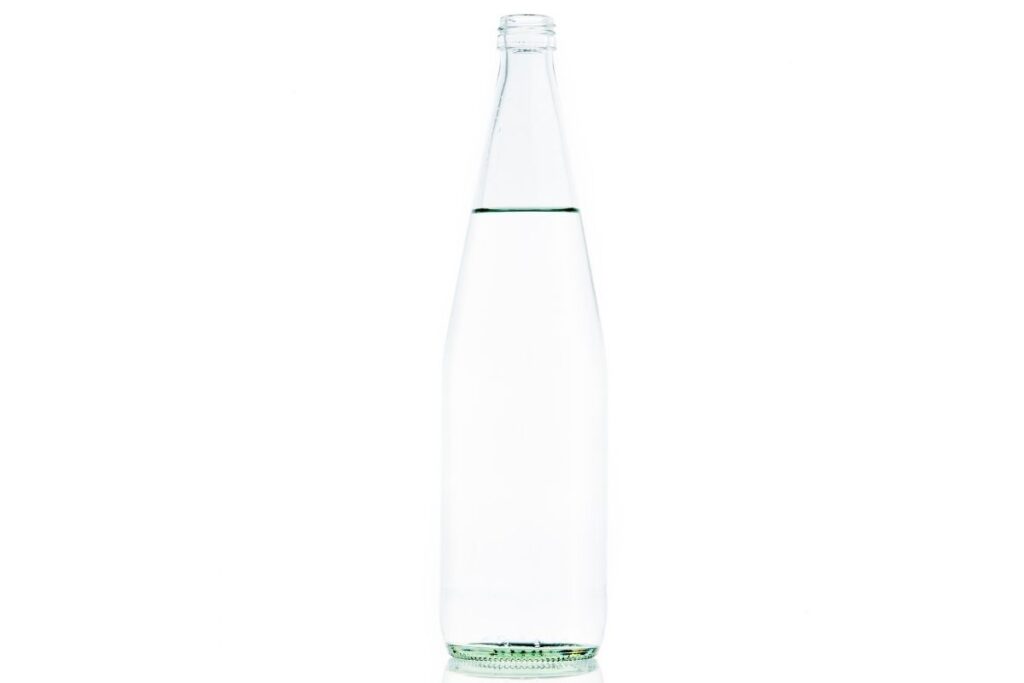
It contains minerals like chlorine, fluorine, and other bicarbonates that will deteriorate the plant’s health.
If you don’t have an option, let the tap water sit for 24 hours.
The minerals will evaporate within this time, and the water will be free from them.
Let them form callous.
If you want to grow Haworthias from leaf cuttings in water, let the leaf heal for some days after cutting.
After 3-4 days, put them in water when they have developed the callous.
I’m unsure about their rooting in the water, and you can give it a try.
If everything is done right, you might get good results.
How to grow Haworthias in water?
Growing Haworthias in water is very easy.
Once you get familiar with the steps, you will find that it doesn’t need much effort.
Let’s start without further delay.
Materials required:
- A clean glass jar
- Distilled or rainwater
- A knife to divide the offsets or cut leaves
- A mature plant
Steps for growing Haworthias in water
Here are the steps of growing Haworthias in water.
Select a healthy plant
A mature, healthy plant can increase the chances of rooting.
For growing from offsets, wait until the plant is mature because only a mature plant will produce offsets.
For leaf cuttings, choose a healthy plant so that the rooting goes well.
Don’t choose an old leaf from the bottom. Go for the young ones.
Separate the babies or the leaves, whichever you prefer for rooting
For offsets, separate the offsets from the plant with a slight tug.
If it doesn’t come out, use a disinfected knife to lighten the work.
For leaves, you choose the right one and pull it off.
Be gentle. For better results, use a knife.
Don’t use scissors as that can damage the fleshiness of the leaves.
Removing the roots
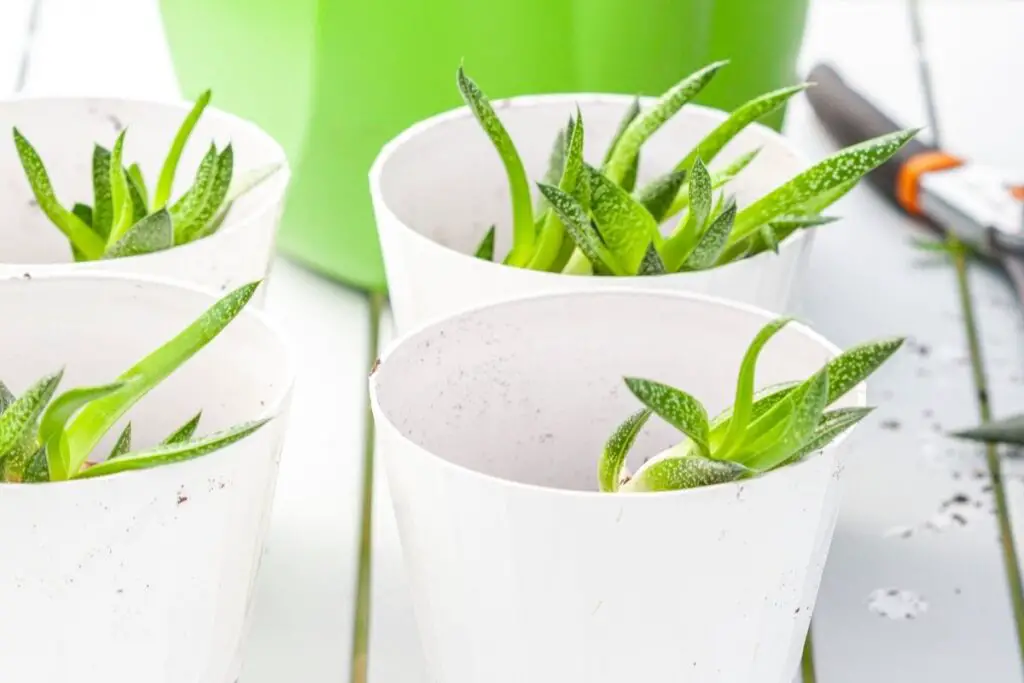
Take out a medium-sized plant from the soil, clean the dirt for the roots, cut off the damaged and dead roots and transfer it to the water.
You can even snap off all the roots and relax. They will grow back roots again.
Shifting a mature plant from soil to water is a kind of water therapy.
It is performed when the plant suffers underwatering, sun damage, or lack of light.
Later on, you can continue growing them in the water for a long time as long as their basic needs are maintained.
Fill up a container
Use a container of your choice.
Though you can use any container, I suggest using a glass jar to get a good view of the water quality and the root development.
Choose a container depending on the plant’s size.
Since the plant is small and their offsets are smaller, choose a small container, like jelly jars of 200-250 grams.
Place the plant in the jar.
After filling up the container, put the plant in the jar.
Only the base of the plant, which is the root portion, should be submerged in the roots.
If the jar is too broad for your plant, seal the mouth with plastic to make a hole so that the root portion can easily pass through it.
There are two good sides to using this method:
The plant will have a proper balance. It won’t fall sideways.
It ensures that only the root portion is immersed in water and not the plant.
Choose the right location for your plant.
Select a location where the plant receives bright indirect sunlight, average temperature, and no high humidity.
For light, choose an east-facing window.
If, by chance, you have a south or west-facing windows, put on sheer curtains to filter the sunlight.
Ensure there are no air conditioners or heater devices near your plant.
It can give them temperature stress and decline their health, thus delaying their rooting.
Measure the temperature of the surrounding spot of your plant and confirm the ideal temperature for them.
Don’t put your plant near the bathroom, kitchen, aquariums, or fireplaces.
These are the most humid areas and result in the rotting of the plant.
Change the water from time to time and fertilize little.
Since Haworthias grow in water, it is necessary to change the water regularly and give them clean water.
Change the water every 2-3 days or whenever it looks cloudy.
It will make sure the plant is in good health.
Fertilize a little with a few drops of liquid fertilizer to increase their metabolism and growth.
How much will Haworthias take to root?
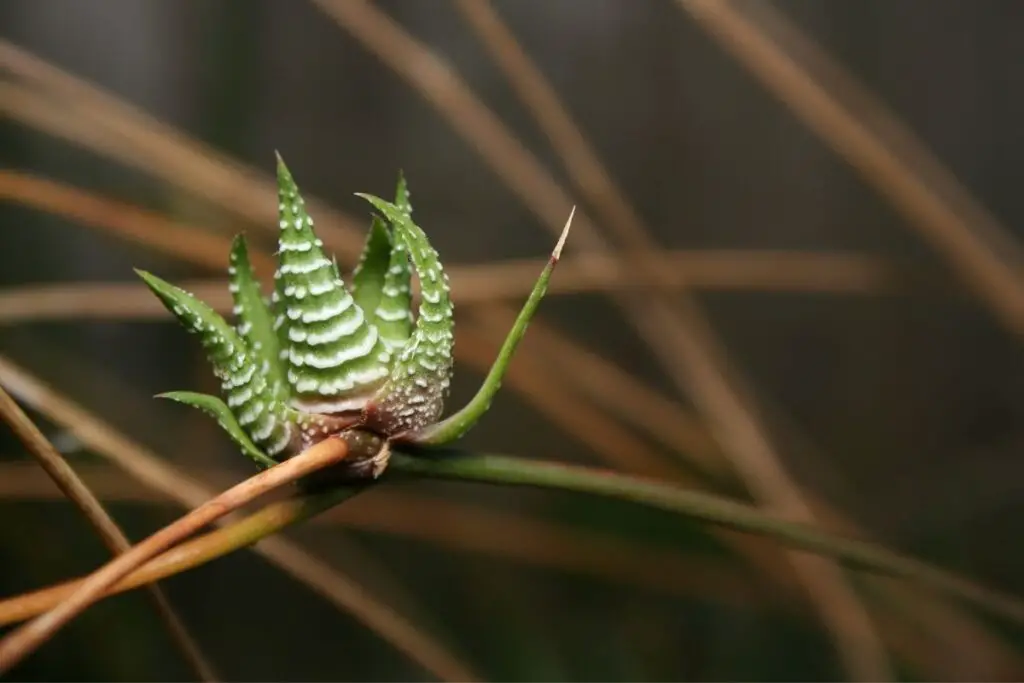
Haworthias are slow-growing succulents.
They will take quite a few weeks to grow roots.
Most probably, the leaf cuttings will take 2-6 weeks or longer.
Since the offsets already have roots, they will take much less time to grow more roots.
The time they will take to root depends somewhat on the surrounding environment and the climate.
If everything is correct, they will take the recommended week.
To prevent delayed rooting, ensure they don’t suffer any serious issues.
Pros and cons of growing Haworthias in water
Before you grow Haworthias in water, you should understand the pros and cons of growing them in water.
| Pros | Cons |
|---|---|
| Haworthias growing in water will never dry out. | Haworthias might not last long while growing in water. |
| Haworthias won’t experience overwatering while growing in water. | You can’t grow outdoor Haworthias in water. |
| Growing Haworthias in water is easier and faster. | It causes wastage of water. |
| Growing Haworthias in water causes low chances of pest or fungal infestations. | It can disturb the roots. |
| Haworthias growing in water require less attention. | Algae formation. |
Let me elaborate.
Pros
There are many advantages of growing Haworthias in water:
They will never dry out.
In soil, there are chances of the plant suffering underwatering.
Most people do it because they take Haworthias for granted due to their feature of storing water.
Eventually, they will need water.
When grown in water, there are no risks of underwatering them.
They won’t experience overwatering.
When you water the soil too frequently, the plant suffers overwatering.
It is because they cannot stand the prolonged damp and suffocating conditions.
They must experience dry conditions.
But since they are already in the water, they won’t suffer any overwatering.
This mistake is made mostly by beginners.
If you are a beginner, try growing these succulents in water to get satisfying results.
It is faster.
When you grow Haworthias in soil, it requires a lot of time.
Selecting the right soil and pot, choosing the right location, mixing different soil ingredients to create a fast-draining soil, and many more things need consideration.
Water propagation is so easy.
Just take a jar, fill it with water, and put your plant in it.
They won’t even suffer any watering or pest issues.
Low chances of pest or fungal infestations
When the plant grows in the soil, pests can loiter around if the soil to damp.
Fungal infections will also occur if the plant receives high humidity with prolonged dampness.
But in water, there is no scene of soil dampness with humidity.
So, there are no scenes of pest and fungal infections.
They need less attention.
When you grow the plant in water, the only care you need to do is change the water.
Before that, you need to take care of their right location. That’s all.
But in soil, you need to check the soil, water them, check for pests and fungus and so many things.
Cons
They might not last long.
Haworthias store water in themselves.
They don’t need to stay immersed in the water for more than 6 weeks.
They may also suffer root rot because they cannot break the nutrients and utilize them due to the absence of the soil.
Soil contains various microbes which help in utilizing nutrients rightly.
Moreover, soil also contains some nutrients which boost the plant’s growth.
However, they might last longer if you fertilize them the whole year.
It can be quite confusing and tricky.
Not for outdoor Haworthias
If you are growing Haworthia indoors, then rooting in water is fine.
While growing outdoors, it is better to use our old traditional methods, in the ground or in containers, whatever seems suitable.
Wastage of water
When you grow Haworthias in water, you need to change the water frequently.
It is not only disturbing but also a waste of water.
But in soil, you only water once deeply and sit back and relax for 2 to 3 weeks.
It can disturb the roots
When you opt for changing the water regularly, you need to take the plant out frequently.
It disturbs the root system and the plant’s smooth development.
Algae formation
Though there are fewer chances of fungal infections, there are high chances of algae formation.
This happens mostly when you don’t change the water.
You might have been out for some weeks, and no one’s there to change the water.
You come back only to see the algae in your precious plant.
In soil, there are no such risks.
Can I keep the Haworthias in water?
You can keep it, but you need to look out for the plant’s health.
There are both pros and cons of growing them in water for prolonged periods.
Generally, they should not be kept in water for more than 6 months.
If your plant is doing well in water, you don’t need to shift them.
But if they show signs of rotting, lack of nutrients, or stunted growth despite doing everything right, you transfer them to the soil.
The root growth in soil and water is quite distinctive.
Shifting the plant from water to soil can be stressful for the plant.
Still, if it seems necessary, use the right soil and container with drainage holes for proper drainage.
If you want Haworthias to stay in the water for a long time, you must follow some tips:
- Change the water regularly.
- Fertilize the whole year only with a few drops of fertilizer once a month.
- Let them have bright indirect sunlight.
- Keep Haworthias out of the reach of children and pets.
- Don’t keep them near AC rooms, heaters, radiators, kitchen, bathroom, aquarium, or fireplaces.
- Protect them during the winters.
Final thoughts
Haworthias are quite tender succulents. Though they require the least of your attention while growing in water, you still need to check the plant daily for its reaction.
The moment you find they are not doing well despite doing everything right, shift them to the soil. Take it out, select an ideal location, make the right soil mix and plant them.
I am not sure about the success of growing Haworthia from leaf cuttings. If you are curious, you can try it once. Since you can propagate them from leaf-cutting, I hope you will get good results in the water.
Growing Haworthia in water is fun and great for novice gardeners. If you are one, try it.
Reference: The Haworthia Society, Botanical Studies, University of Wisconsin-Madison, Sciencedirect, Researchgate, Haworthia Study.
